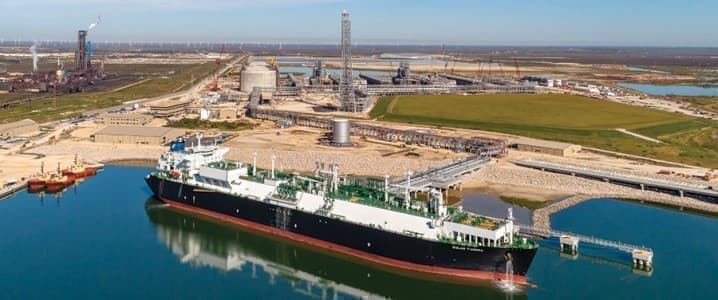The U.S. LNG export boom, strongly supported by the Trump Administration, could be undermined by separate trade rules proposed by the very same administration, which looks to revive America’s shipbuilding to counter China’s dominance.
Under new mandates proposed by the U.S. Trade Representative (USTR), beginning in 2028, a total of 1% of America’s LNG exports must be carried via U.S.-flagged vessels. From 2029 onwards, 1% of U.S. LNG exports should be shipped on U.S.-flagged and U.S.-built vessels.
This number will gradually rise over the decades, and by 2047, a total of 15% of all U.S. LNG exports should be carried on U.S.-built U.S.-flagged LNG tankers.
Just 1% of exports may look like a negligible figure if one doesn’t consider that the United States is the world’s largest LNG exporter, the current operational global LNG fleet has just one U.S.-flagged vessel (but built in France), and that building an LNG tanker in the United States will take years and probably cost two to four times the price of building a vessel in South Korea or China.
It is countering China’s dominance and reviving America’s shipbuilding that’s the key goal of the proposed USTR rules.
However, energy industry groups and analysts say the mandate would harm U.S. LNG exports more than it would crimp China’s dominance.
Related: Mexico Approves Fracking to Reverse Sagging Oil and Gas Production
The oil and LNG lobby groups are calling on the USTR to scrap the provision for LNG tankers, as compliance with the mandate is impossible.
The Center for Liquefied Natural Gas (CLNG), the U.S. trade association promoting LNG exports and including LNG exporters and project developers, says that compliance with the USTR mandate is impossible as “There are currently no U.S.-made or enough U.S.- flagged vessels capable of exporting the quantity of LNG necessary to support current or increased U.S. LNG exports.”
The U.S. does not have the shipyard capacity, technical capability, or supply chains to significantly ramp up shipbuilding of U.S. LNG carriers to meet the USTR requirements. In addition, the U.S. currently lacks the highly specialized and skilled crews for the operation and maintenance of LNG ships, CLNG said.
The U.S. exported a total of 1,396 LNG cargoes last year. At the same time, the global LNG vessel fleet has 792 operating tankers, per data cited by the CLNG trade association. Of these, only one is a U.S.-flagged ship, but it is half the capacity of a modern LNG carrier and primarily serves to deliver LNG to Puerto Rico.
CLNG and the American Petroleum Institute (API) last month jointly filed comments on the proposed USTR mandates, saying that the restrictions on LNG shipping do not directly address China’s unfair practices and “instead penalize U.S. LNG exporters.”
The requirement “is unrealistic and will continue to disproportionately impact the U.S. LNG industry and not Chinese entities,” API and CLNG said.
Last year, about 1,400 cargoes of U.S. LNG were delivered to buyers around the world, and that number is slated to nearly double by the end of the decade as terminals that are currently under construction enter service, the associations said.
Under USTR’s requirements for 1% of U.S. LNG exports starting in 2029 to be transported on U.S.-built vessels, as many as six U.S.-built LNG vessels would be required by the end of the decade, which is not feasible.
The U.S. built its last LNG carrier in 1980.
Moreover, the groups note that there is a limited ability to access key shipbuilding components and build LNG vessels in the U.S., while the United States lacks the skilled labor necessary to build LNG carriers and probably a more daunting challenge of crewing and manning these vessels, API and CLNG said.
Analysts say the industry needs clarity on what would constitute a U.S.-built vessel.
“Could the majority of the vessel be manufactured overseas and completed in the U.S.? Is it a U.S.-made engine?” Jason Feer, global head of business intelligence for Poten & Partners, told CNBC.
Other experts say that the mandate, if it stays, will require flexibility in interpretation of what constitutes a U.S.-built ship and waivers for the industry if the Trump Administration wants its American LNG export dominance to succeed.
“Without some common-sense flexibility or a phased-in approach, the math just doesn’t add up,” Louis Sola, a former commissioner at the Federal Maritime Commission appointed by President Trump, and now a partner at lobbying firm Thorn Run Partners, told CNBC.
“We risk bottling up our own LNG exports and opening the market to the competition right when our allies need American energy the most.”
By Tsvetana Paraskova for Oilprice.com
More Top Reads From Oilprice.com
